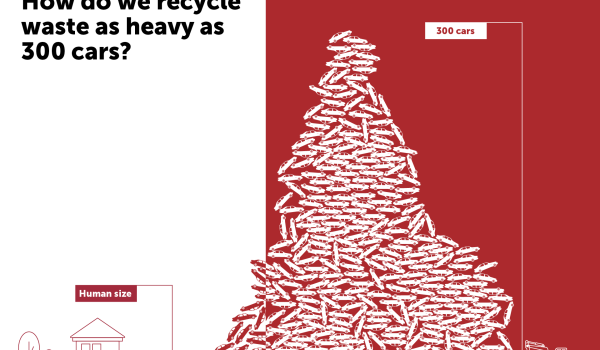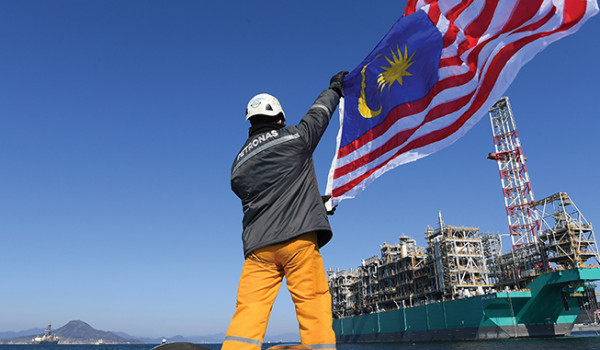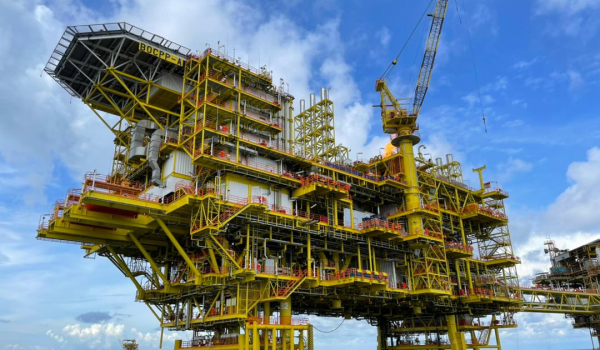At the 2018 Geneva Motor Show in March, PETRONAS Lubricants International (PLI) became the first player in the lubricants sector to announce a clear commitment statement on sustainability.
10/06/2020 • 8 mins read
Banking on First-Mover Advantage
Premilla Mohanlall

“We pledged to double our investments and dedicate 75 per cent of our research and development budget to carbon reduction projects,” says Managing Director and Group CEO Giuseppe D’Arrigo.
“The following year, at the 2019 Geneva Motor Show in March, we again broke new ground by becoming one of the first companies to announce e-fluid technologies with the PETRONAS iona range of products,” he adds.
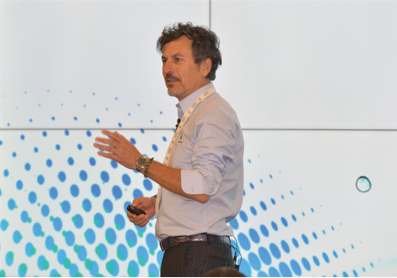

Giuseppe D'Arrigo, speaking at the symposium in Turin, Italy that included elaborate sharing by experts on topics including EV technology trends and the role of fluids in the evolution of e-transmission and battery technology.
Then in November 2019, PLI made another counter industry move. It presented its findings of the industry’s first global study in electric vehicles (EV) technology and fluids focusing on electric drive units and batteries at a symposium in Turin, Italy that saw a large gathering of original equipment manufacturer (OEM) players and Tier-1 suppliers, research scientists and the media.
“What the industry found interesting,” says D’Arrigo, “is that PLI was entering the challenge of finding the right e-fluid technology with an open mind. We clearly did not have all the answers. Instead, we began by asking the right questions based on assumptions backed by solid research.”
The symposium saw elaborate sharing by experts on topics ranging from EV technology trends and market relevance to the role of fluids in the evolution of e-transmission and battery technologies. The feedback, particularly from OEM participants, was encouraging, with some declaring the brainstorming had triggered them to reconsider their existing approach and solutions.
These high-profile outings have made known PETRONAS’ sustainability goals on the world stage. They also reaffirmed PLI’s credentials as a leading technology player in the lubricants space. The symposium, meanwhile, has proven to be a catalyst for knowledge sharing, and led to several collaborations targeting co-engineered e-fluid solutions. E-fluids play a critical role in increasing the performance and life span of EVs with their protection and preventive properties.
PLI, meanwhile, looks forward to long-term gains from these first-mover advantages. “Our early entry creates many opportunities. It helps position us as thought leaders and strengthen our brand appeal. It also means we can choose the best partners for collaboration. Eventually, we expect our pioneering efforts to create a strong space for our products and solutions in the future,” says D’Arrigo.
Sustaining the Momentum
A buzz has been created and now PLI needs to sustain this momentum. “We are progressing well in this regard,” says D’Arrigo. “Despite the COVID-19 lockdown, our activities have not stopped. We are launching projects as we speak. Our laboratories are working in a mutual environment with top OEMs and Tier-1 suppliers on several ongoing EV fluid technology development projects.
"Despite the COVID-19 lockdown, our activities have not stopped. We are launching projects as we speak. Our laboratories are working in a mutual environment with top OEMs and Tier-1 suppliers on several ongoing EV fluid technology development projects."
“Among them is a collaboration with one of the largest drivetrain manufacturers in the world. This project involves developing a particular fluid for electric drive units (EDU) as required by OEMs and automakers.
“We have already started production of these e-fluids to be tested by two leading Japanese OEMs and one Korean OEM. It will be the first application of our iona product range. We are also working with some German OEMs on specific collaborations for the development of fluids for the thermal management of batteries and EDUs. EDU is a new concept where the electric motor is put into the same housing as the gear mechanism. The e-fluid has to protect and cool both parts at the same time. This is a new challenge, and we have already started developing solutions,” adds D’Arrigo.
PLI has also planned a second symposium to be held in China in November this year. Like many big gatherings, this is subject to the COVID-19 lockdown restrictions.
D’Arrigo says, “PLI’s e-fluids journey of discovery started in Europe where we have our R&D Centre of Excellence in Turin. We now want to engage with China, considered the main EV market of today and also the future.”
Short and Long-term Investment Returns
PLI has a two-pronged investment strategy. “One is to direct engineering and R&D efforts towards upgrading existing internal combustion engine (ICE) and hybrid technologies to do more for less, achieve high returns for relatively small investments. Two, is to focus on EV-specific fluid technologies, especially for electric driving units and battery thermal management.
The latter saw the trailblazing symposium in Turin that have led to collaborations with a number of universities, as well as several OEMs and Tier-1 players. “These numbers continue to increase and we are working with multiple players and applying different approaches while retaining clarity about what we want to achieve,” says D’Arrigo.
“We must bear in mind that what we are working on today may not be the final technology to be used. It is about learn-and-emerge. Our target is the application of the “emerge” technology to produce our iona e-fluids. And it must deliver best-in-class in terms of efficiency and economies of scale.


“I am confident of PLI’s capabilities in this regard. We are, after all, recognised as one of the best, if not the best, in lubricants R&D in the world. PLI products are among the most visible in the world. Thirty million consumers see our brands every day globally. Besides, our investments are above the industry average, and we have more than 250 scientists, engineering talent and researchers working on developing various types of lubricants in different parts of the world.
“It is important for us to be at the forefront of the Group’s technology drive. This is our competitive advantage in the business.”
PLI has a two-pronged investment strategy. “One is to direct engineering and R&D efforts towards upgrading existing internal combustion engine (ICE) and hybrid technologies to do more for less, achieve high returns for relatively small investments. Two, is to focus on EV-specific fluid technologies, especially for electric driving units and battery thermal management.

Building on Our F1 Hybrid Experience
For now, PETRONAS’ competitive advantage rests with three fluids that make up PETRONAS Fluid Technology SolutionsTM; PETRONAS Primax, PETRONAS Syntium and PETRONAS Tutela transmission fluid. These formulations leverage our experience with lubricants developed for the fastest Formula 1 hybrid car in the world – the Mercedes-AMG PETRONAS Formula One Team that has won six Constructors’ and Drivers’ Championships since the start of the Formula One hybrid era in 2014.
In February 2019, PLI launched upgraded the PETRONAS Syntium engine lubricants with °CoolTechTM technology. °CoolTechTM products are the first to be unveiled under PLI’s carbon reduction initiatives announced at the 2018 Geneva Motor Show.
The hallmark of new Syntium range is the PETRONAS Syntium 7000 Hybrid with °CoolTechTM, a new lubricant for hybrid engines. It marks the company’s entry into the hybrid lubricant market. “This is a result of our technological strength and commitment to create fluids that help reduce carbon emissions,” says D’Arrigo.
PETRONAS Syntium with °CoolTechTM products can help achieve up to five per cent fuel economy and significantly reduce emissions under certain test conditions, says D’Arrigo, illustrating his point with the following analogy: “When one car uses this product for one year, it can displace carbon emissions equivalent to planting five trees a year. Multiply this many times over, and it is equivalent to reforesting entire states in Malaysia every year.”
°CoolTechTM technology is part of PLI’s “more for less” strategy that builds on existing technologies to enjoy quick investment returns. For e-fluids, on the other hand, the measurement of success for now will be determined by the number of collaborations, projects, and testing needed for iona product before they are commercialised. The entire process has the potential to create better knowledge, better credibility and the pre-eminence for PETRONAS to ride on the projected growth wave of e-mobility.
“I believe we have made the right moves with the industry so far. I expect us to realise our first-mover advantage when we start to shift our e-fluid focus to the consumer market in the not too distant future,” adds D’Arrigo.
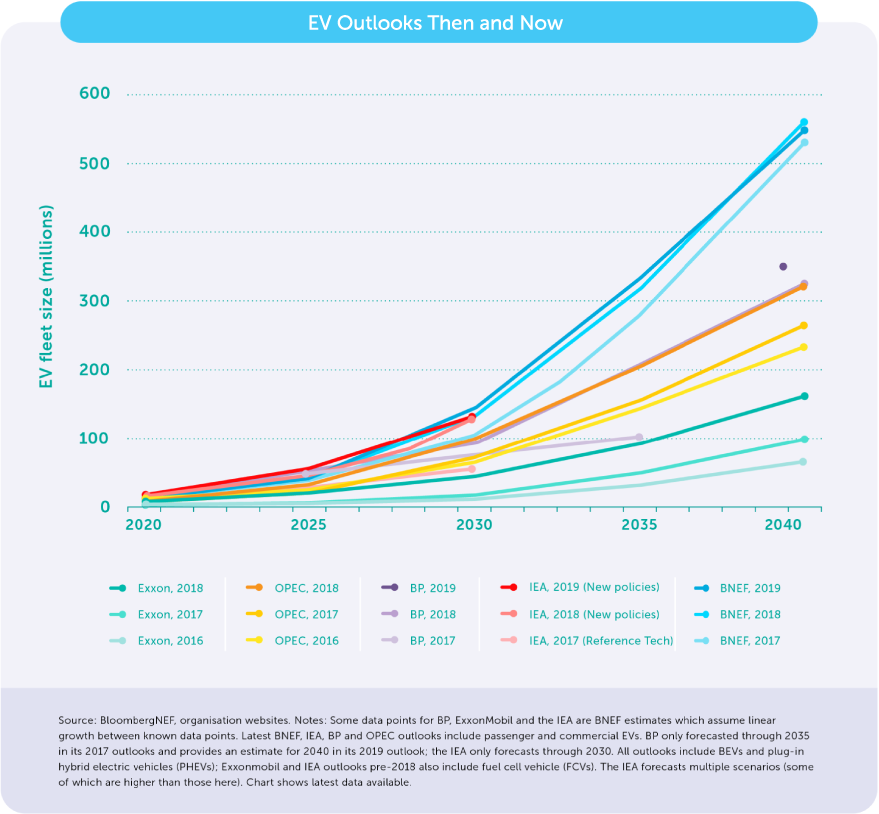

The Impact of COVID-19 Pandemic
“Overall, we expect an economic slowdown caused by COVID-19 lockdowns. Industry will thus need to refocus in the face of declining demand.
In our industry, we are seeing OEMs and industry players reconsidering some of their investment priorities. There is already talk of delay in carbon emission restriction targets in some countries because the industry just cannot cope with the heavy investments they require.
What this means is that the EV timetable is likely to be delayed. Instead, we expect to see an increased demand for fluids that will extend the lifetime and performance of existing machinery, be it industrial equipment, agricultural and construction machinery or automotives. New machinery and replacements will be delayed.
At PLI, we expect to experience a fall in demand for lubricants for new equipment as well as a decline in investments by OEMs in EV technologies. This, however, will be balanced out by a rise in demand for fluids for existing businesses. We thus need to ramp up efforts to make our fluids even more relevant in these circumstances.
The delayed pick up of the economy can also be viewed as an opportunity for PLI to prioritise and select partners who are the best fit for its e-fluid ambitions.”
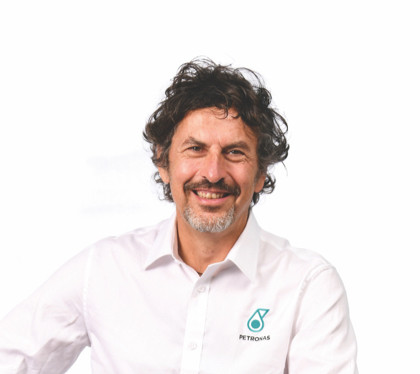
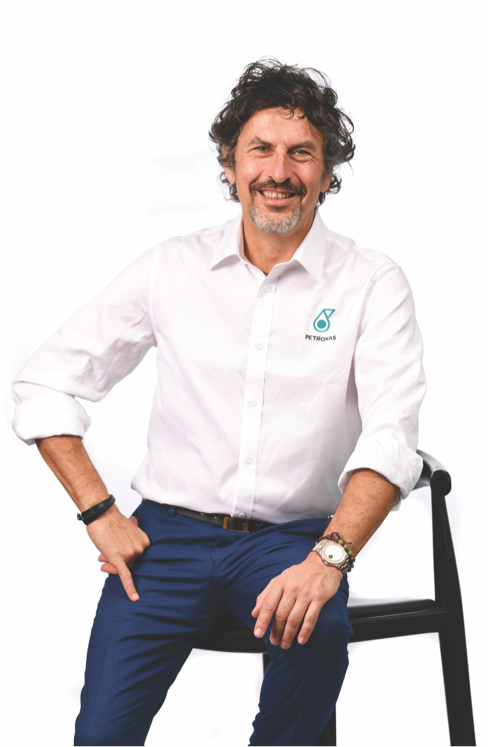
Giuseppe D’Arrigo
Managing Director and
CEO PETRONAS Lubricants International
Lubricants to Drive Efficiency Improvements and Emission Reduction


Lubricating the internal combustion engine (ICE), however, is quite different from lubricating an EV motor. The ICE needs oil to minimise engine friction and transmission fluid. Engine oils account for the larger part of lubricant demand in ICE vehicles; other lubricants are transmission oil, hydraulic oil, wheel bearing and chassis grease.
EV motors require several fluids: oil for the reduction gear that is the EV’s transmission unit and oils specifically for the electric motor if the oil cooling is used for the motor. There is also a need for thermal management fluid for the battery and power electronics to support fast charging and strong acceleration in order to increase range and ensure safety. Typically, e-fluids must protect key components while preventing short circuits.
The electrification of road passenger transport is likely to gain traction over the next decade as more countries and municipalities around the world implement measures to reduce carbon, particulate and other emissions, reports McKinsey Energy Insights. The 2016 Paris Agreement, along with rising air quality concerns and the diesel emissions scandal, have intensified diesel and fossil fuel restrictions. France will ban all gasoline and diesel vehicles by 2040, while Athens, Madrid, Mexico City announced plans to ban all diesel cars and vans by 2025. China and India are also considering electric vehicle targets, the report adds.


By 2030, the number of EVs or other types of electrified vehicles is estimated at about 200 million globally, up from the current five to six million. In comparison, there will 1.8 billion ICE vehicles, an increase of 80 per cent. The intermittent period will continue to be dominated by ICE vehicles, says D’Arrigo.



